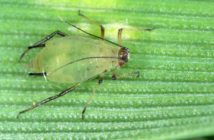With the dry weather continuing, UPL is warning potato growers of possible challenges with sprout control this season.
“The last time we had similar summer conditions to this year was in 2022, and many growers opted not to apply maleic hydrazide (MH), which led to a tricky following season for in-store sprout suppression. It’s worth spending the time focusing on applying MH products like Fazor correctly, because even if you only average 6ppm in tubers, it will still provide a significant boost to tuber dormancy,” says the company’s potato technical specialist Geoff Hailstone.
Growers should target 12-14 parts per million (ppm) of MH in tubers; however, 6 ppm provides sufficient control of sprouting and should therefore be the base target level.
The general rules for spraying MH are applicable irrespective of the conditions. However, Geoff says the advice does differ if the crop is under water stress. “Growers should apply it to a green, healthy canopy at least three weeks before burn down, but ideally three to five weeks. Marketable tubers should also be at least 25mm in size before application.
“Additionally, to maximise uptake, MH should be applied alone, at 400-500 l/ha water volume.”
The critical challenge to maximising uptake of MH in hot, dry weather is trying to have the spray dry slowly on the leaf. Therefore, growers should always spray in the evening if daytime temperatures exceed 25°C and in a high relative humidity (above 75%) if possible, states Geoff.
Recent research conducted by Dr Mark Stalham, sponsored by CUPGRA and UPL, has enabled the general rules to be refined. “If the crop is unirrigated or under water stress, better results may be achieved by applying a bit earlier, 4-5 weeks before burn down, as opposed to 3-4 weeks,” adds Geoff.
Growers may also wish to consider grading out small tubers, less than 40mm in diameter, because it is known that they will accumulate less MH and may necessitate in-store sprout suppressant applications earlier than desired.
“Getting MH application right isn’t easy, especially when there are lots of other demands on time over the harvest period, but at only £2 per tonne, Fazor is by far the most cost-effective sprout suppressant available. The time and attention invested now will yield a significant return over the winter.
“Not only that, it will provide an element of insurance against secondary sprouting in the field if the weather breaks just before harvest,” he concludes.




